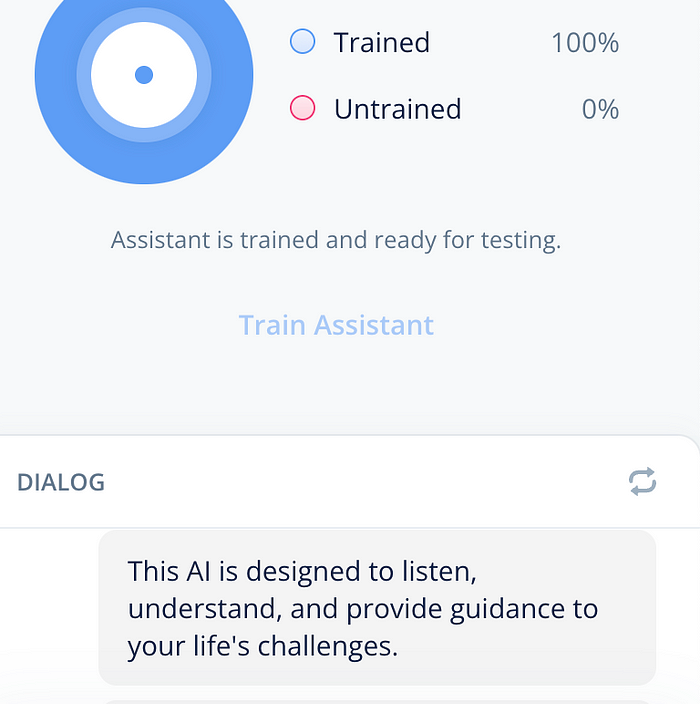In our rapidly advancing world, the fusion of technology and mental health support has given rise to innovative solutions. Among them, mental health chatbots stand out as transformative tools, providing immediate and accessible assistance. In this article, we embark on the journey of creating a mental health chatbot — a companion designed to offer support and guidance for individuals navigating the complex terrain of mental well-being.
The Need for Mental Health Support
Imagine a society in which people aren’t afraid to ask for help when they need it for mental health issues — a society in which starting a basic chatbot conversation may be the first step towards achieving overall well-being. Mental health issues are widespread, yet the stigma associated with seeking help often serves as a barrier. A chatbot for mental health has the potential to help not just by offering quick support, but also by acting as an inspiration to lessen the stigma that society attaches to talking about mental health issues.
The process
Ideation and Conceptualization

The inception of this mental health chatbot began with a profound acknowledgement of the increasing need for accessible and empathetic mental health support. Inspired by the transformative potential of technology, the initial stages involved extensive brainstorming and ideation to conceptualize a digital companion capable of offering genuine emotional support through chat interactions.
Data Collection and Ethical Considerations

Once the ideation phase solidified the vision, the next critical step was gathering a diverse and extensive dataset. This dataset would serve as the foundation for the chatbot’s understanding of various emotional states, nuances in language, and potential triggers. It was imperative to ensure that the data collected was representative, respectful of user privacy, and aligned with ethical considerations.
Privacy concerns loom large when dealing with mental health data. Therefore, the data collection process prioritized anonymization, and stringent security measures were put in place to safeguard users’ personal information. Informed consent became a cornerstone, ensuring that users understood how their data would be used and could trust the chatbot as a confidential space.
Developing the Language Processing Backbone
At the core of the mental health chatbot’s functionality lies a sophisticated natural language processing (NLP) system. This system was meticulously developed to not only understand the literal meaning of words but also to grasp the underlying emotions and sentiments expressed by users. The chatbot needed to navigate the delicate nuances of language associated with mental health, ensuring it responded with empathy and accuracy.
Machine learning algorithms played a pivotal role in training the chatbot’s language processing capabilities. The iterative training process involved exposing the chatbot to a myriad of conversations, fine-tuning its responses to align with the diverse ways individuals express their mental health concerns. The goal was to create a chatbot that not only comprehended words but genuinely understood the emotional context behind them.
User Interface Design for Comfort and Accessibility

Crafting a user-friendly interface was crucial to encourage open communication and ensure users felt comfortable sharing their thoughts and feelings. The design process prioritized simplicity, creating an intuitive and calming virtual space. Colors, fonts, and imagery were carefully chosen to evoke a sense of tranquility and promote a positive user experience.
Accessibility was a key consideration in the user interface design. The chatbot aimed to be inclusive, catering to users with diverse needs. Features such as text-to-speech capabilities and customizable font sizes were integrated to enhance accessibility for individuals with different abilities.
Testing and Iterative Refinement

The journey involved extensive testing, simulating various scenarios to gauge the chatbot’s effectiveness in different contexts. Beta testing with real users provided invaluable feedback, shaping the iterative refinement process. Users’ experiences and insights were instrumental in enhancing the chatbot’s responses, ensuring it remained a reliable and supportive companion in various situations.
Nurturing a Digital Companion for Mental Wellness
Building a mental health chatbot is not just about coding; it’s about crafting a digital companion that understands, empathizes, and supports individuals on their mental health journey. This journey intertwines technology, empathy, and ethical considerations, creating a digital space where seeking mental health support is destigmatized, accessible, and empowering. The fusion of technology and compassion in the form of a mental health chatbot serves as a testament to the positive impact artificial intelligence can have on our collective well-being.

